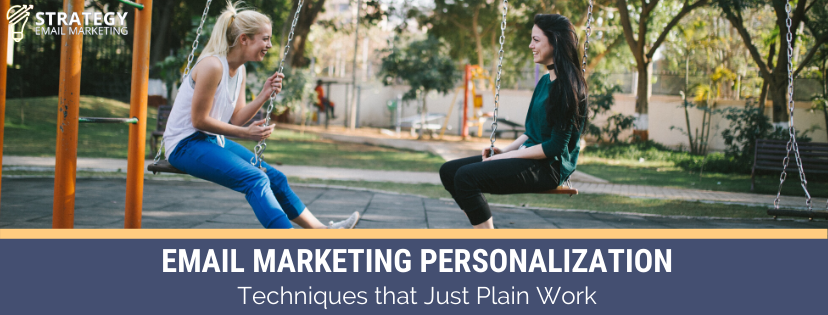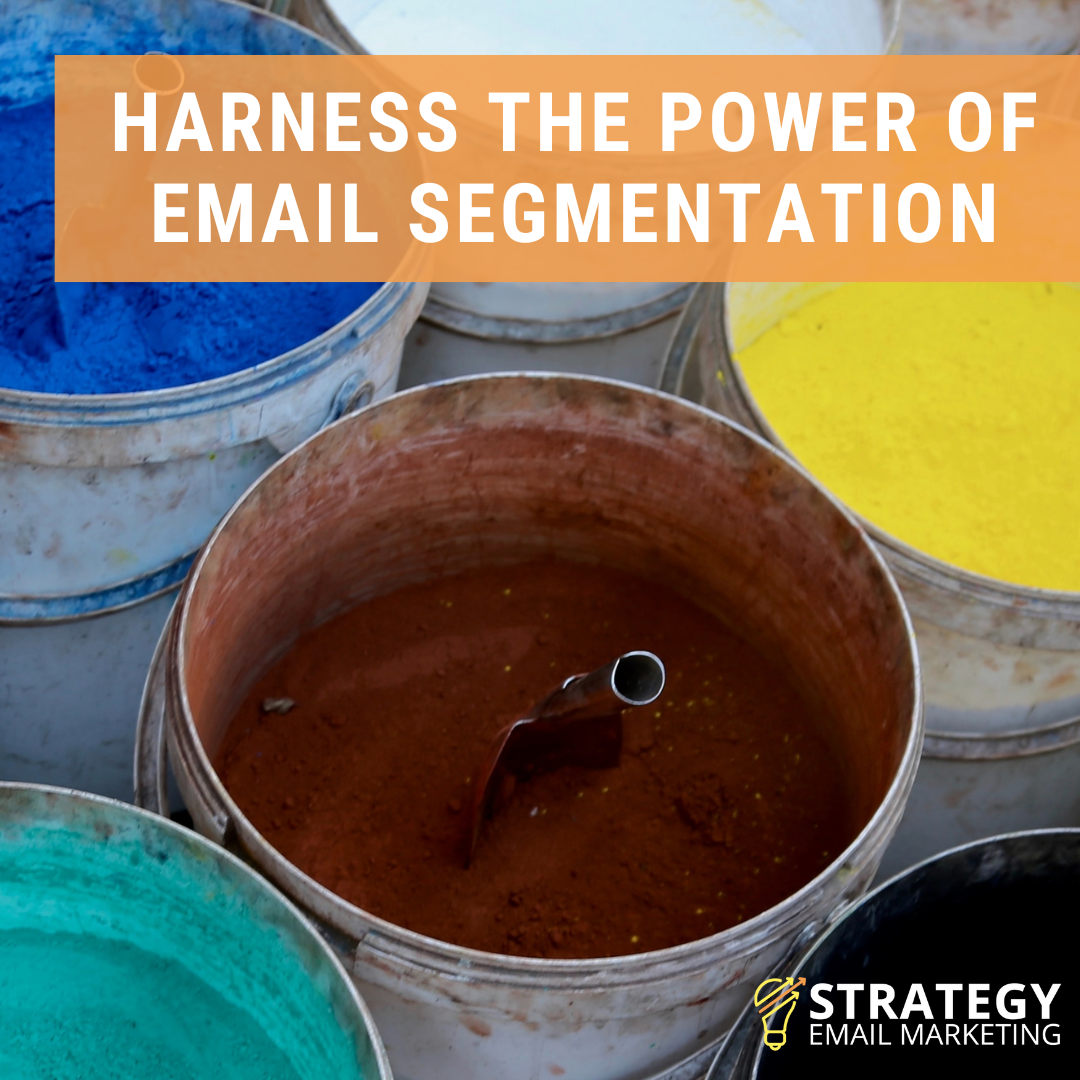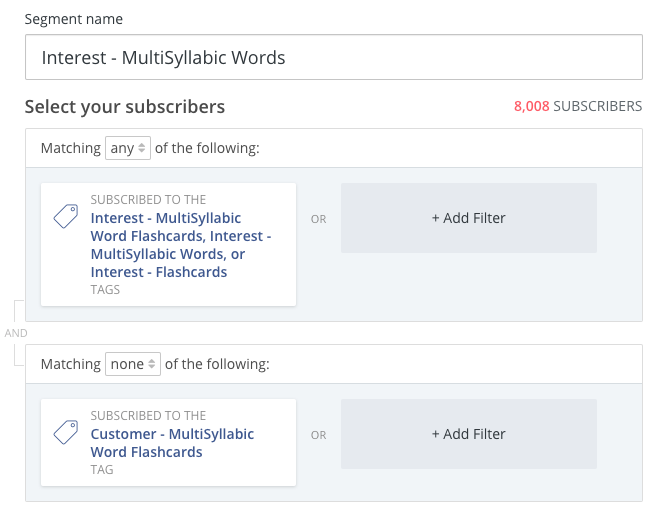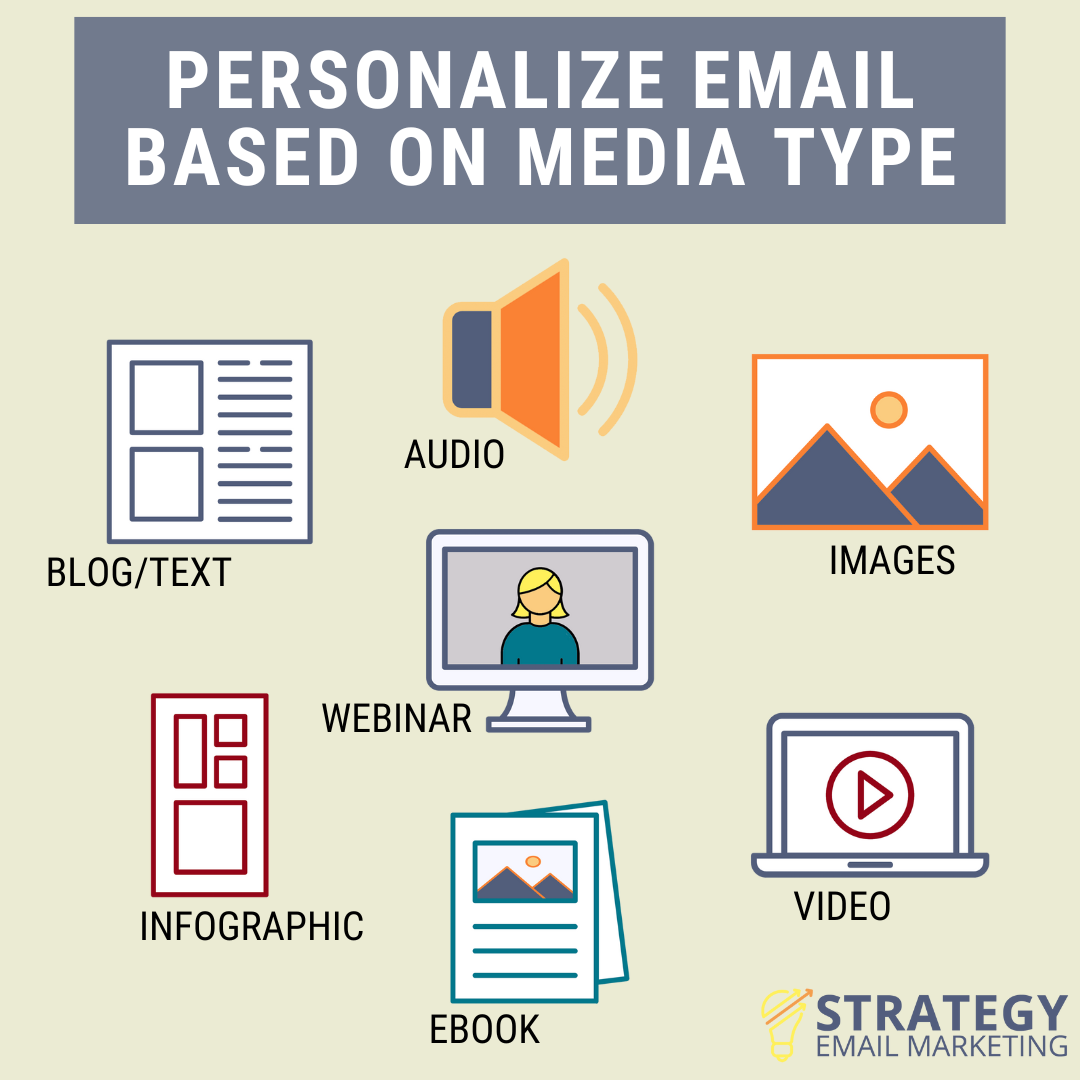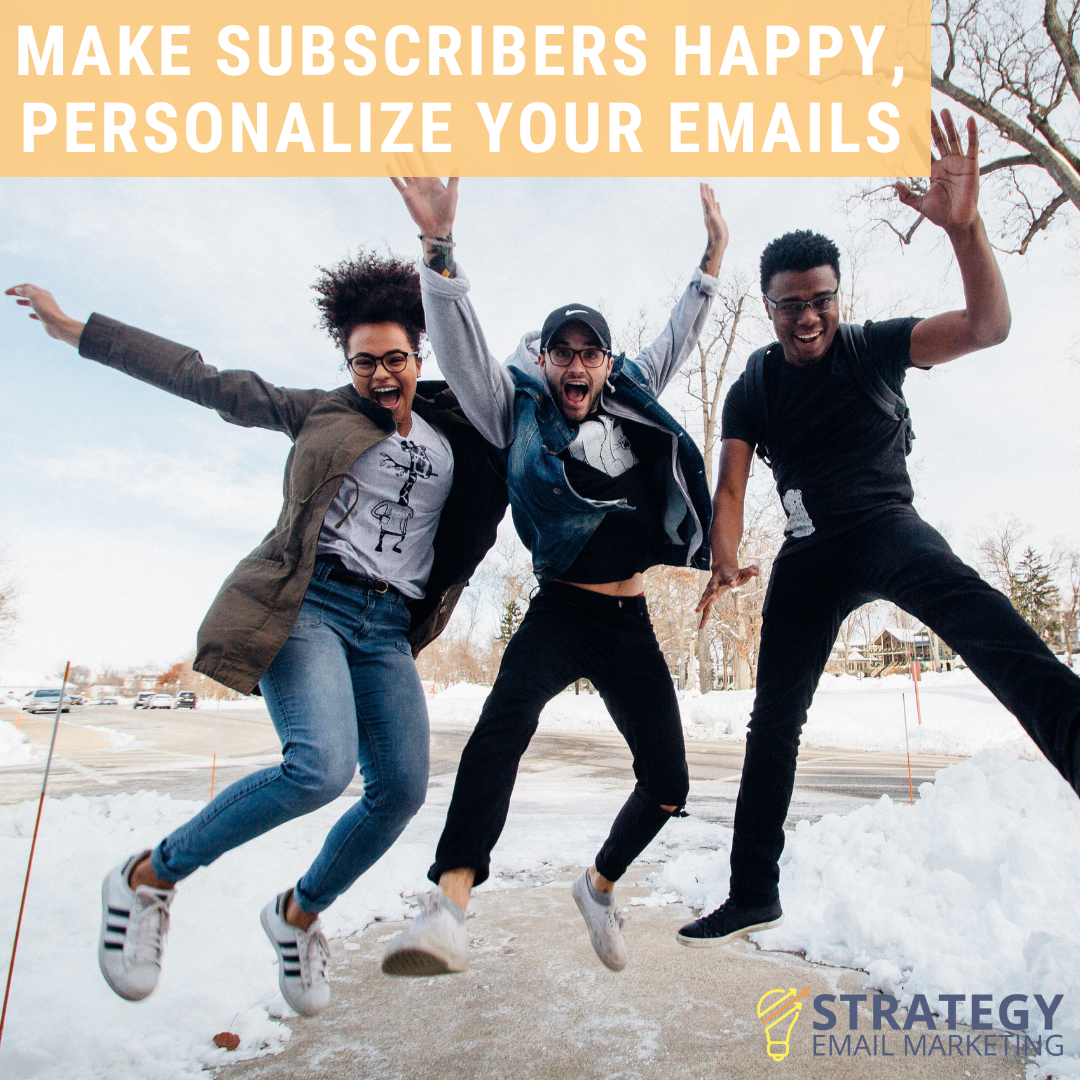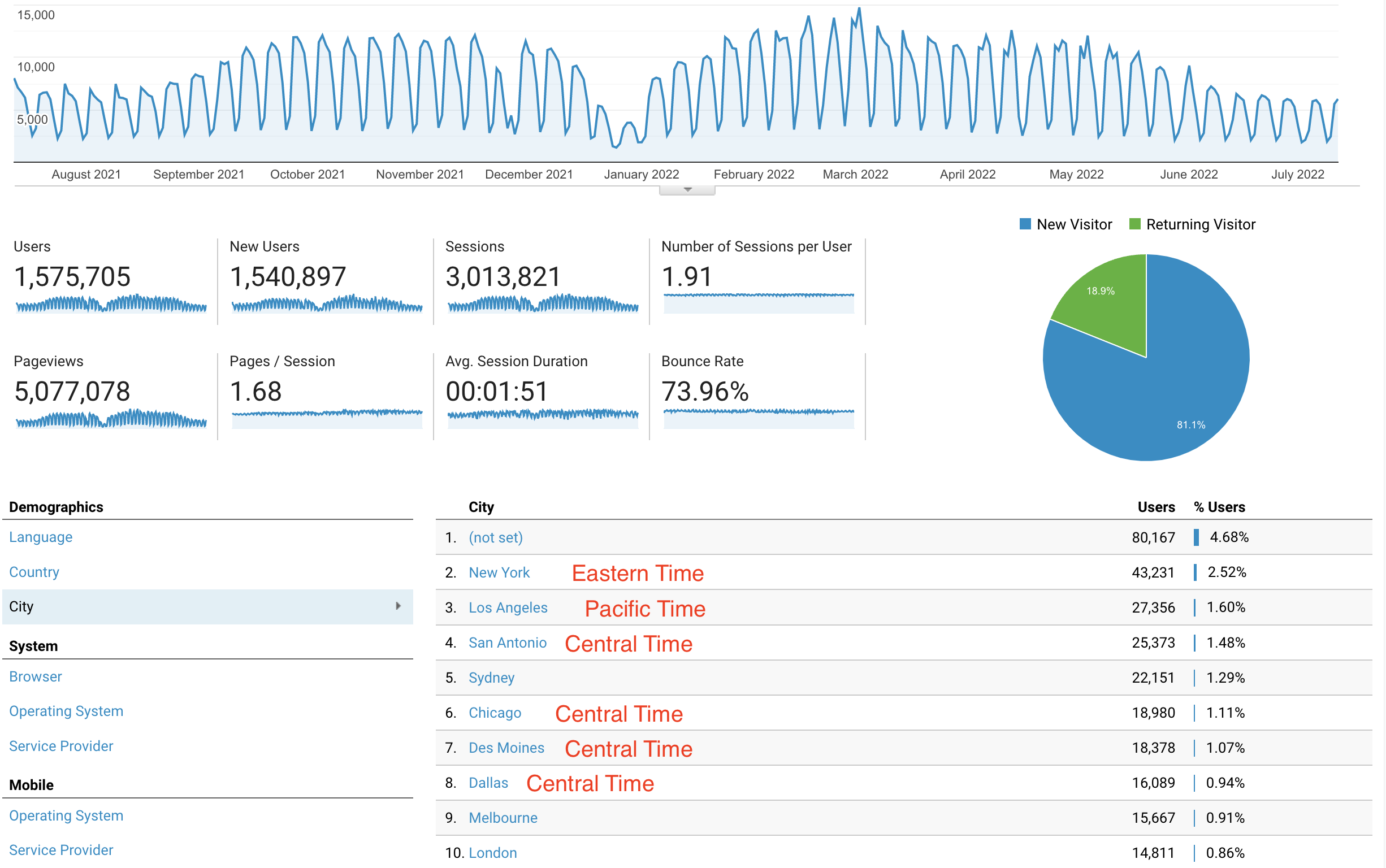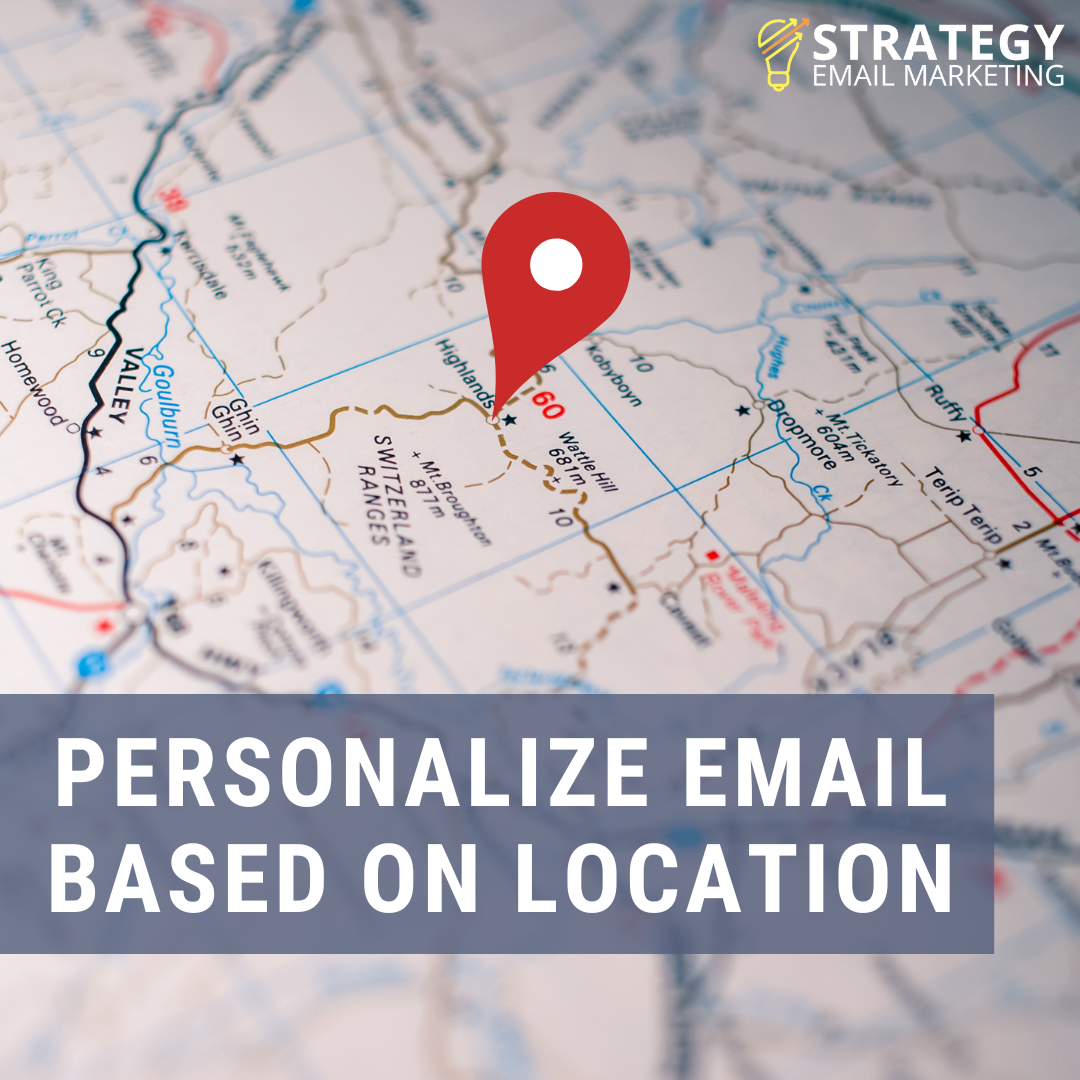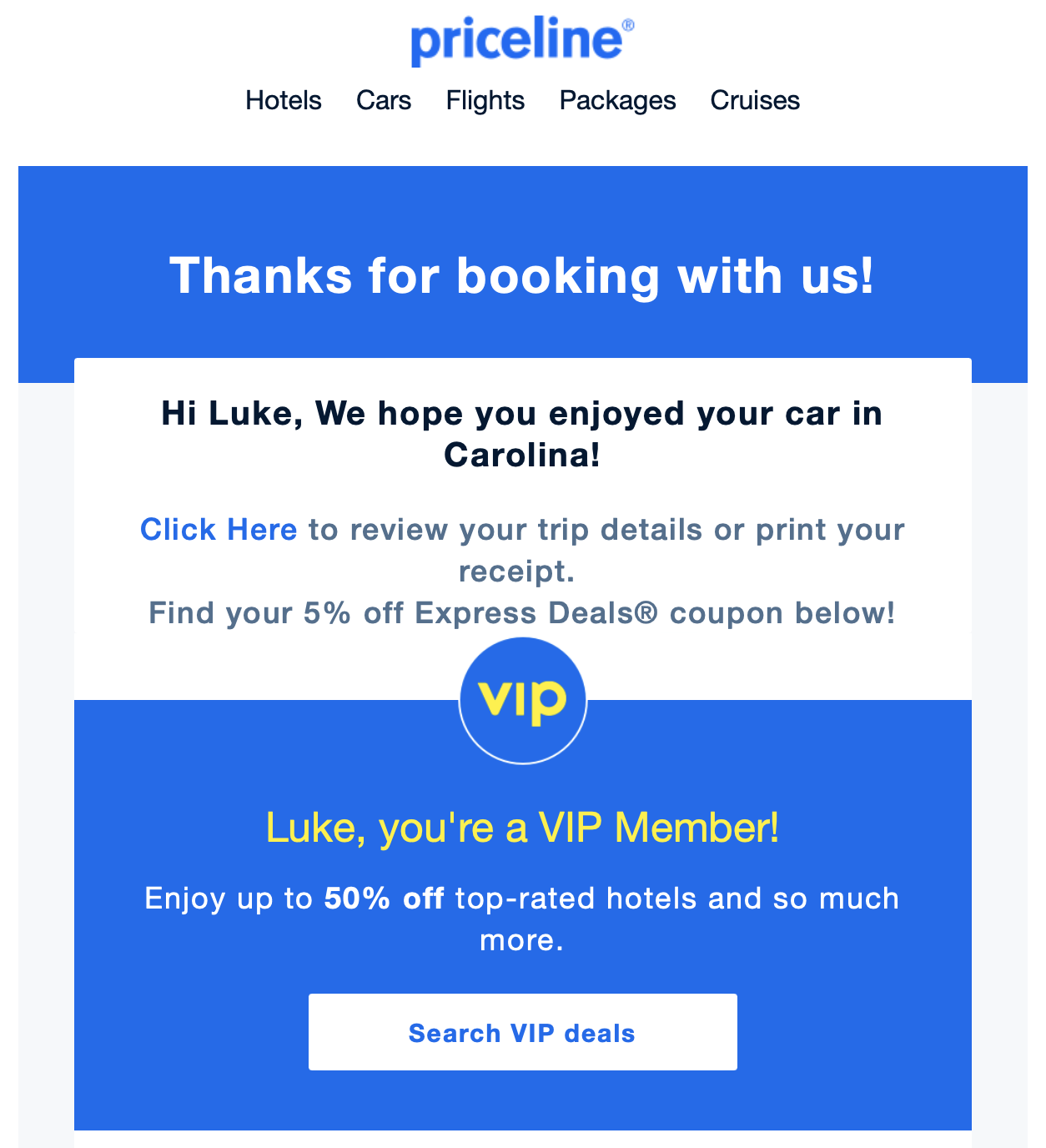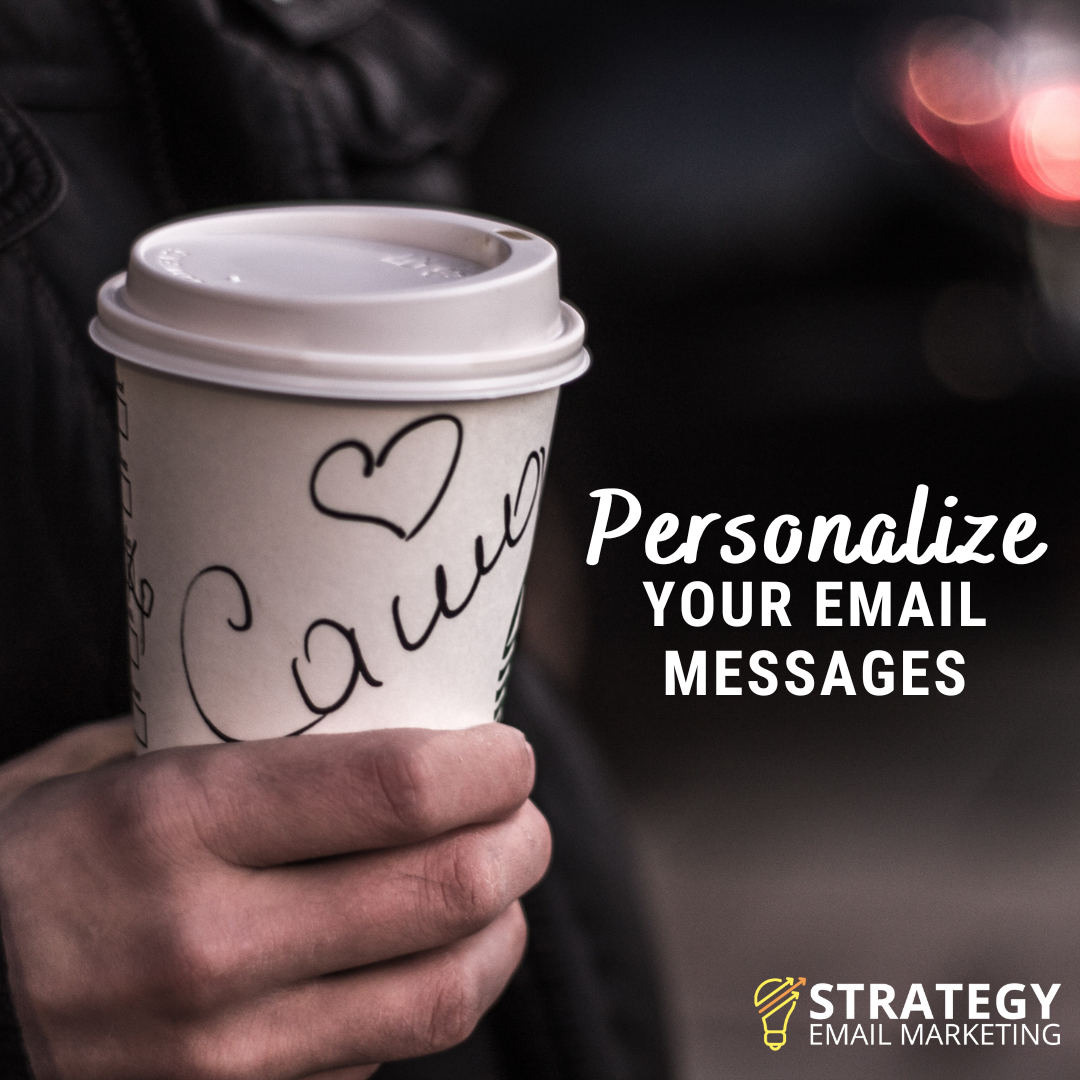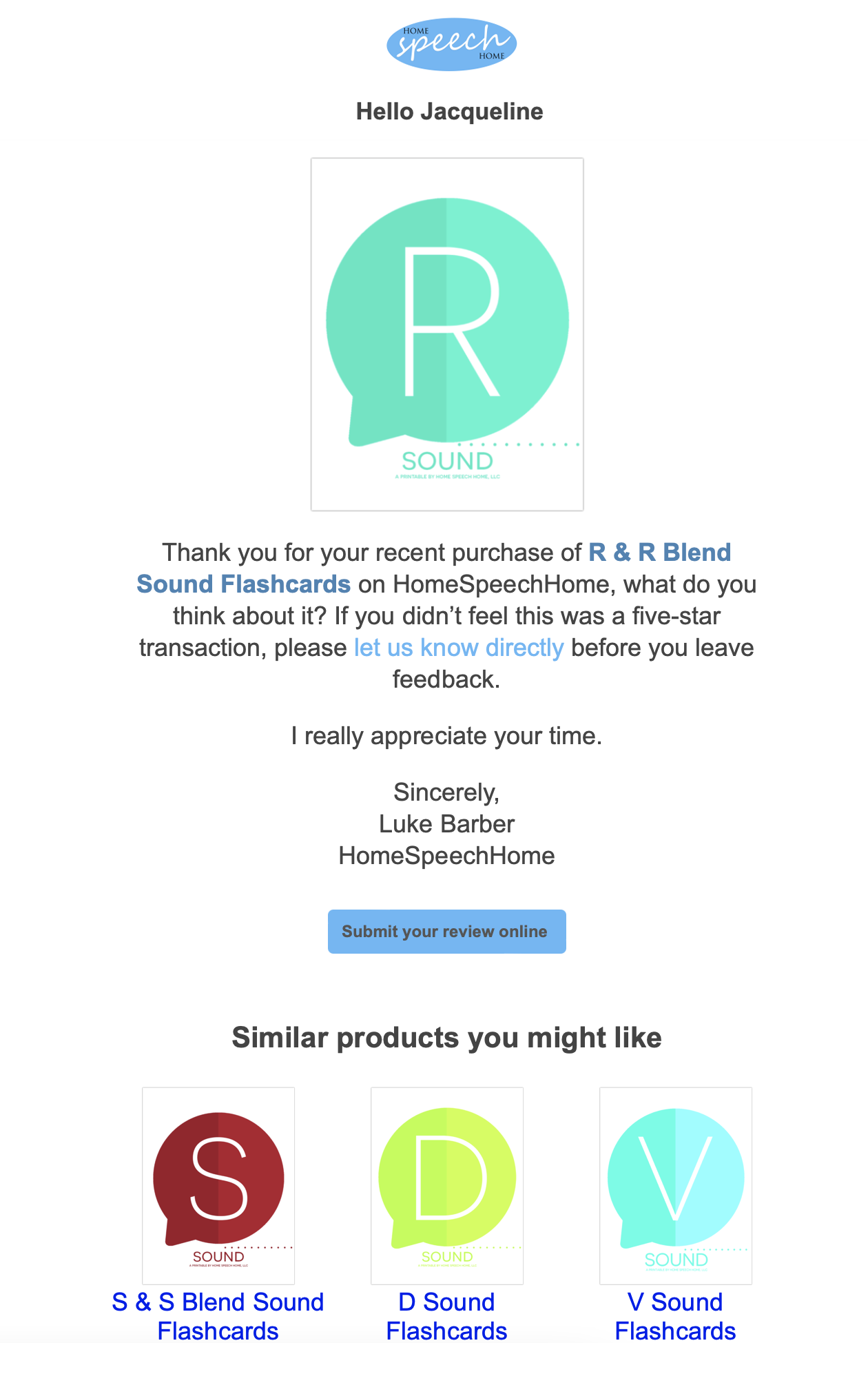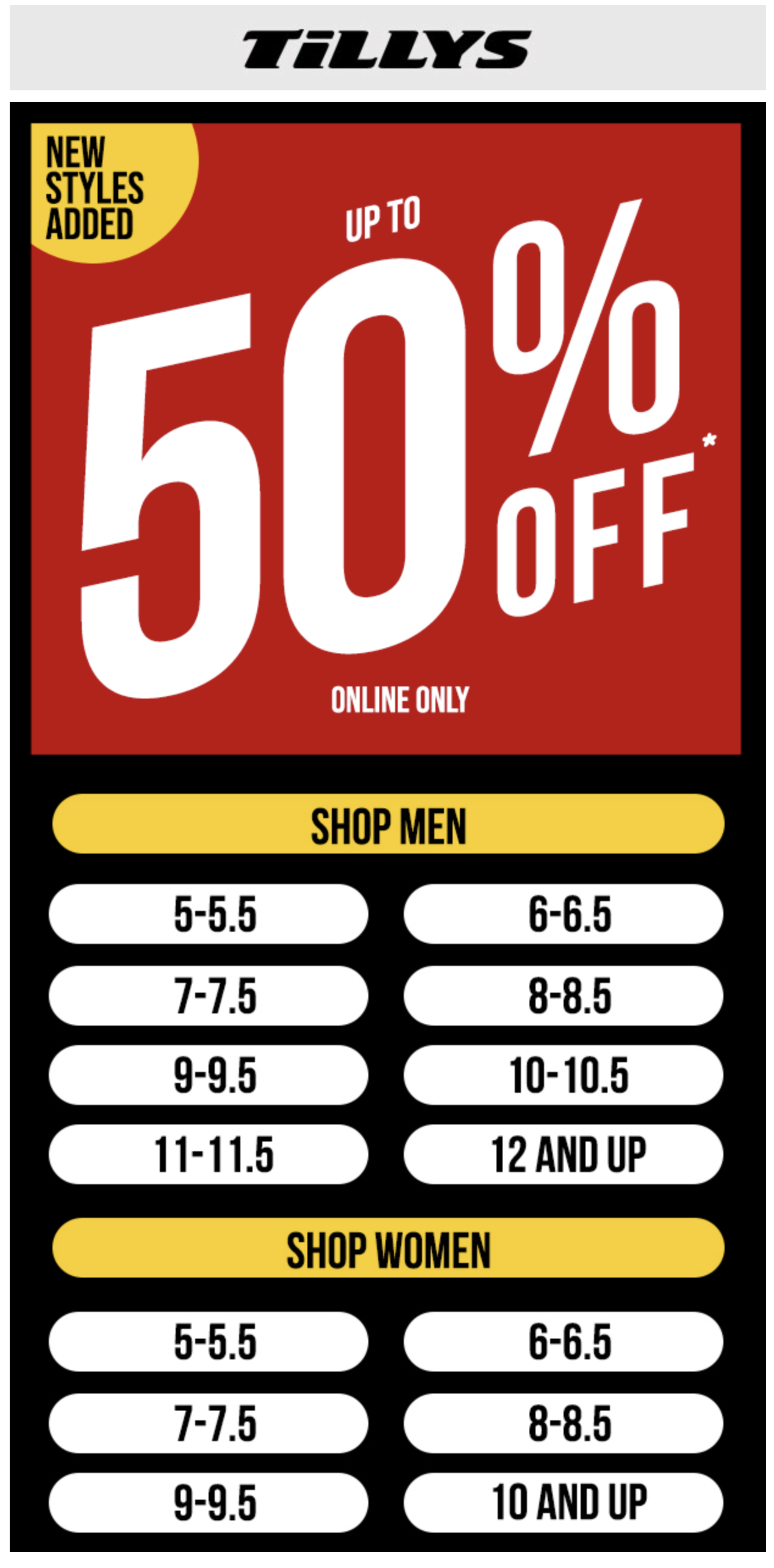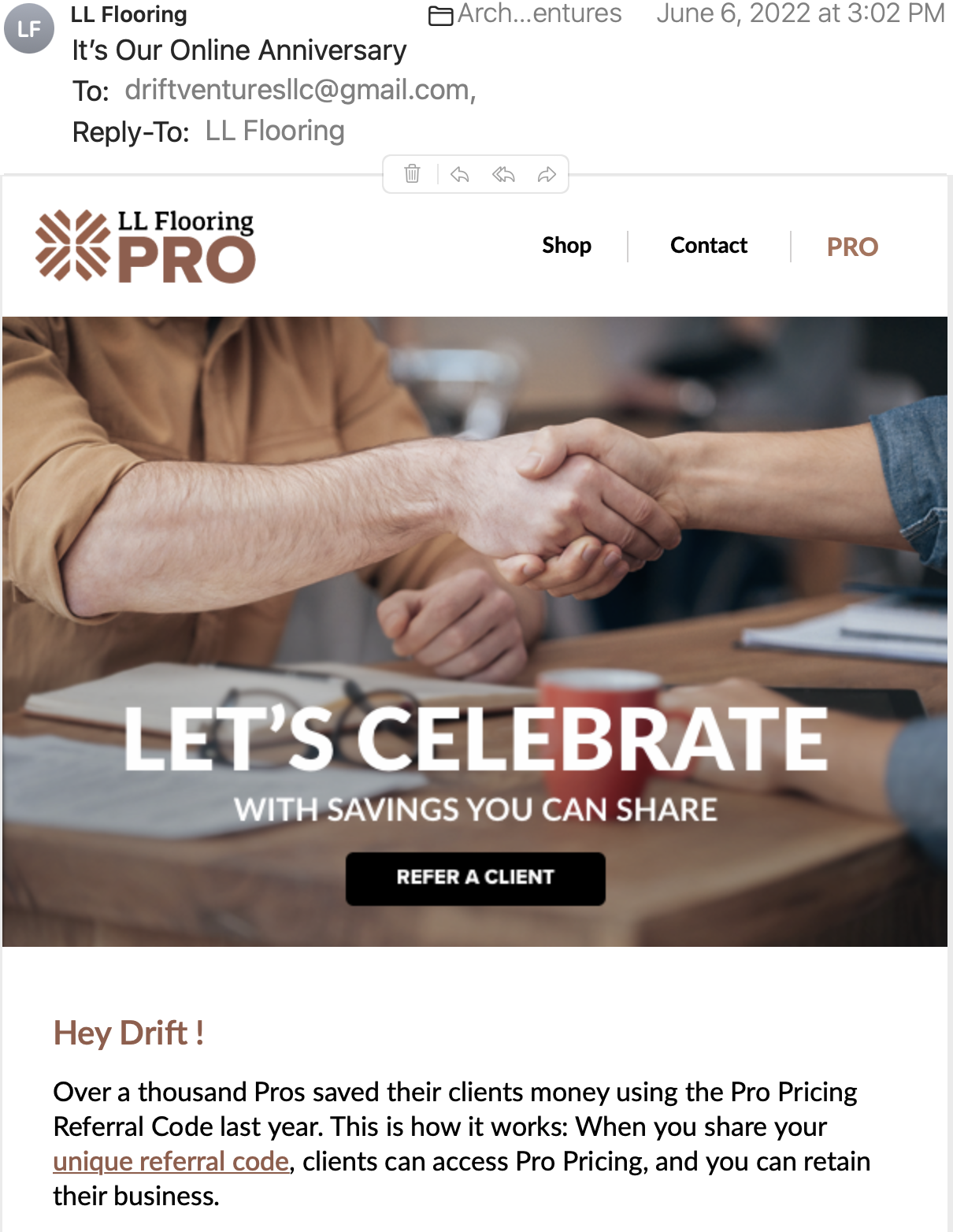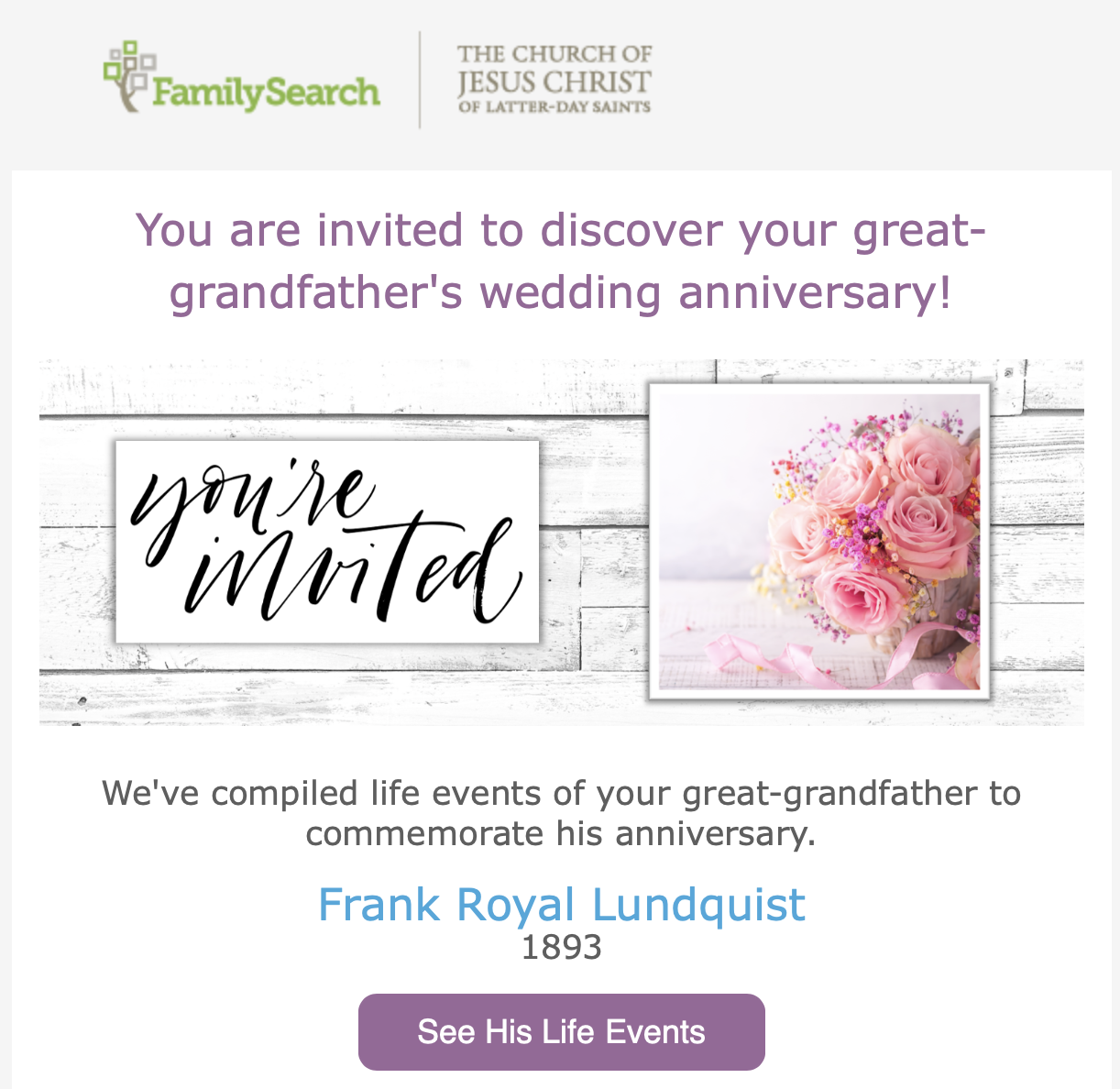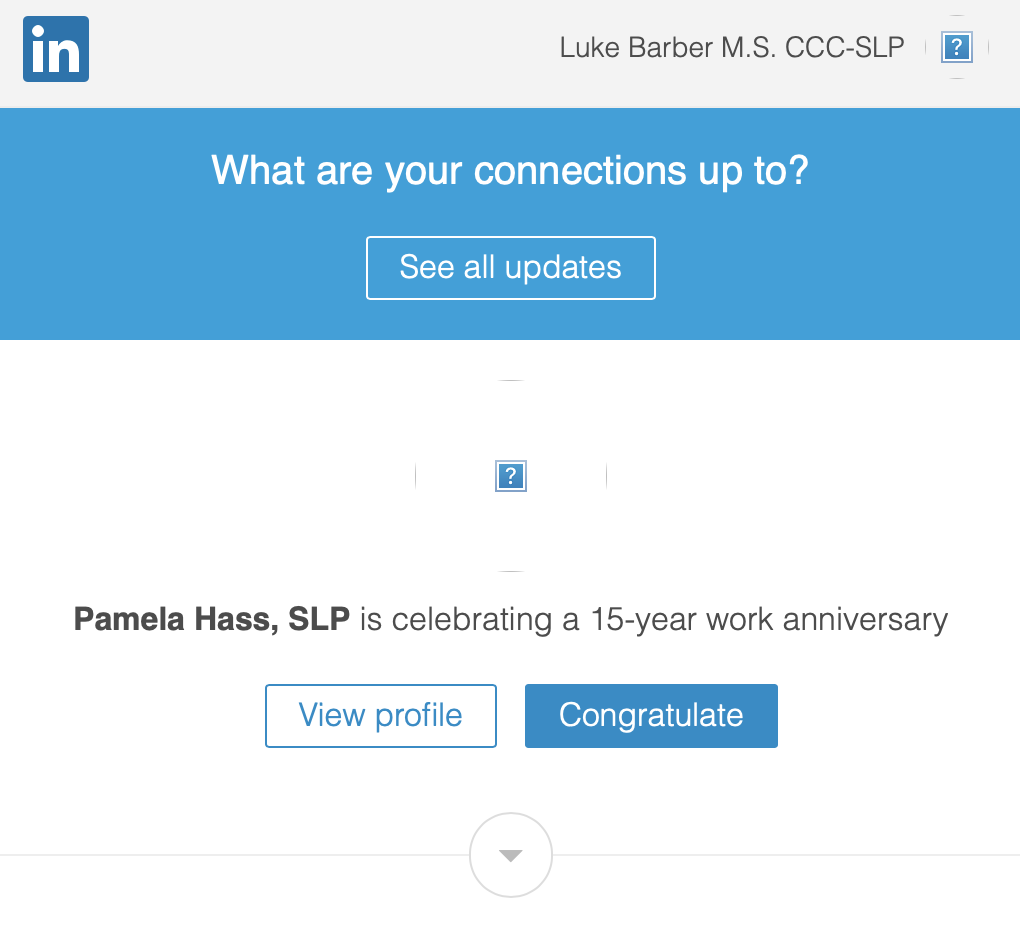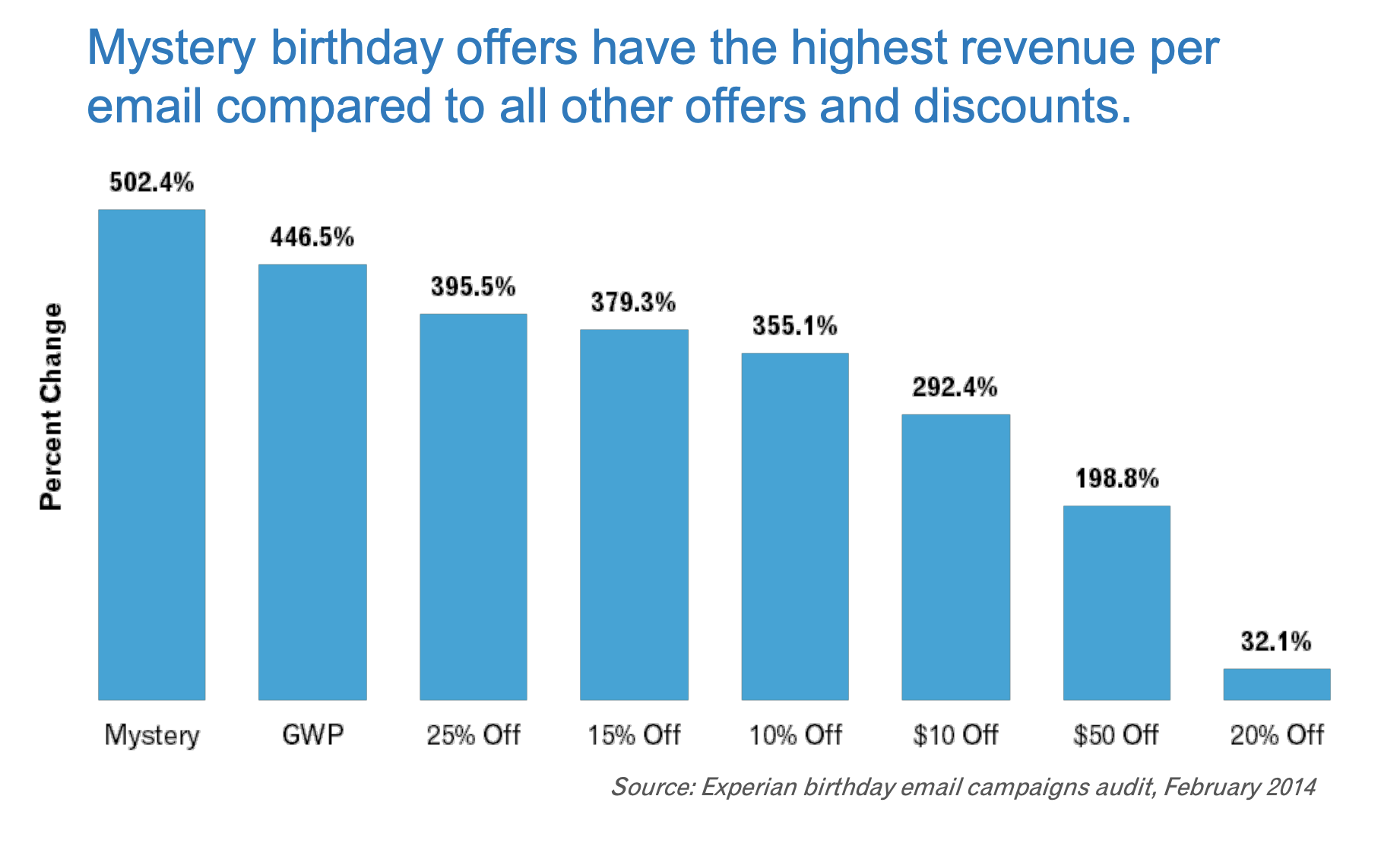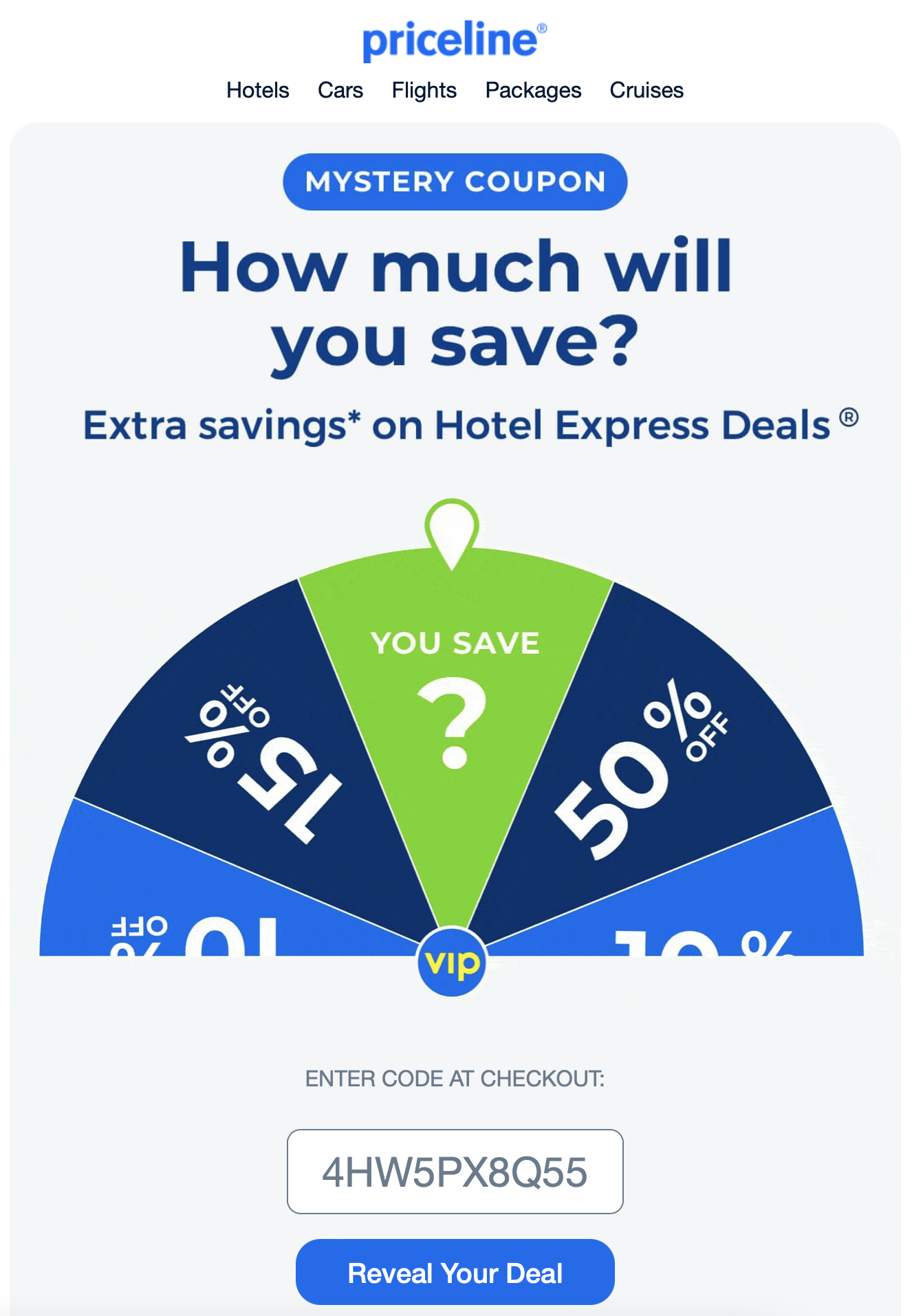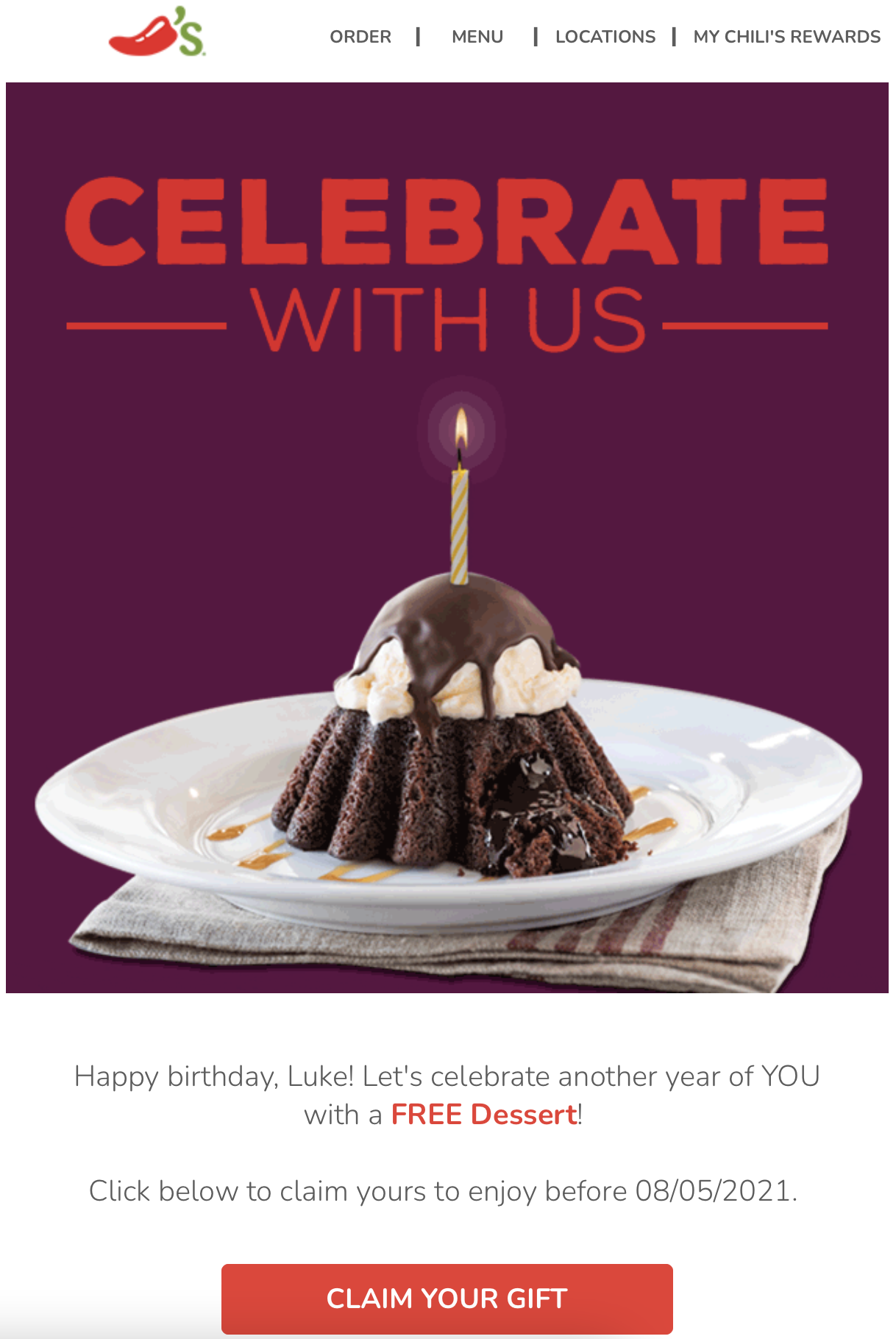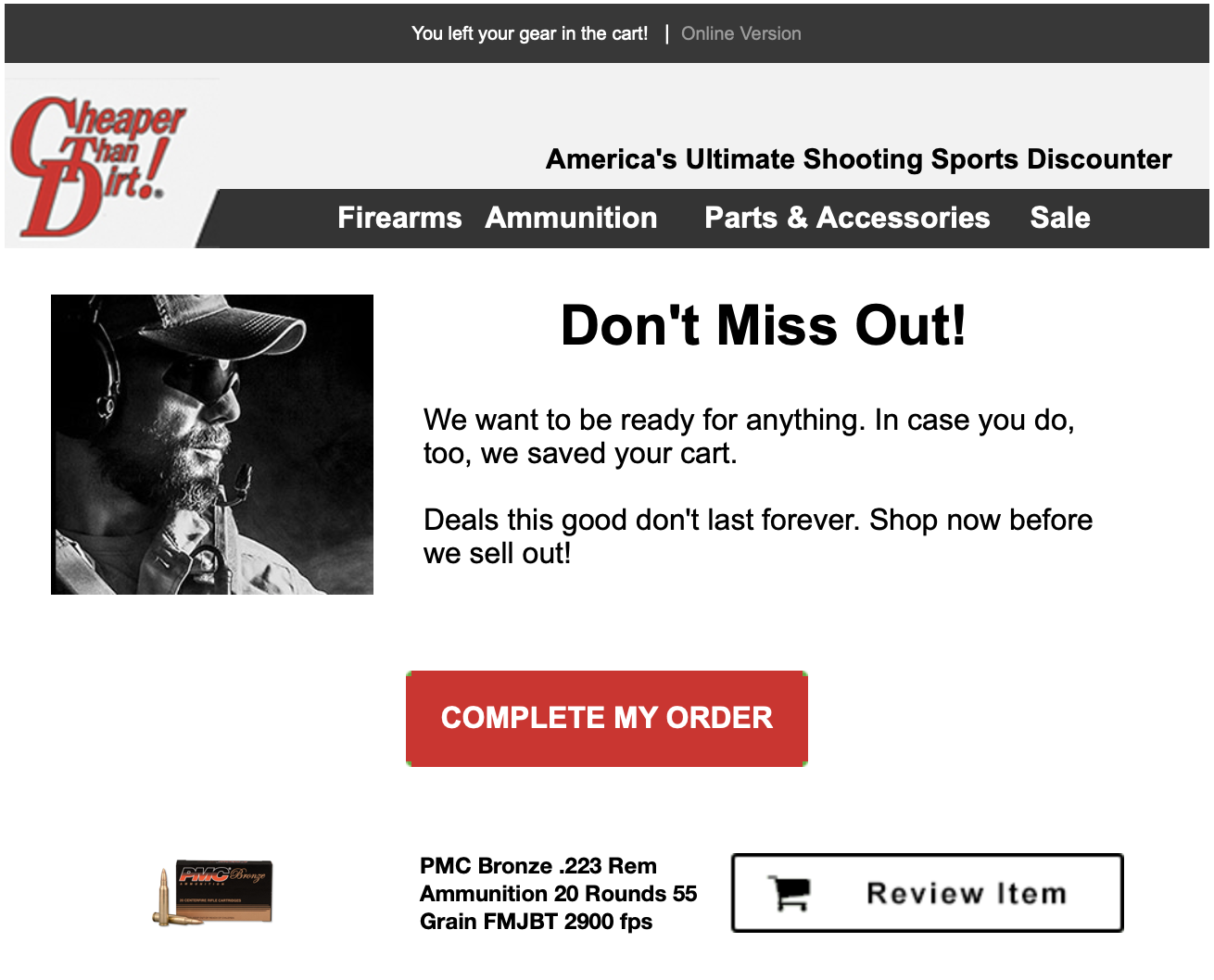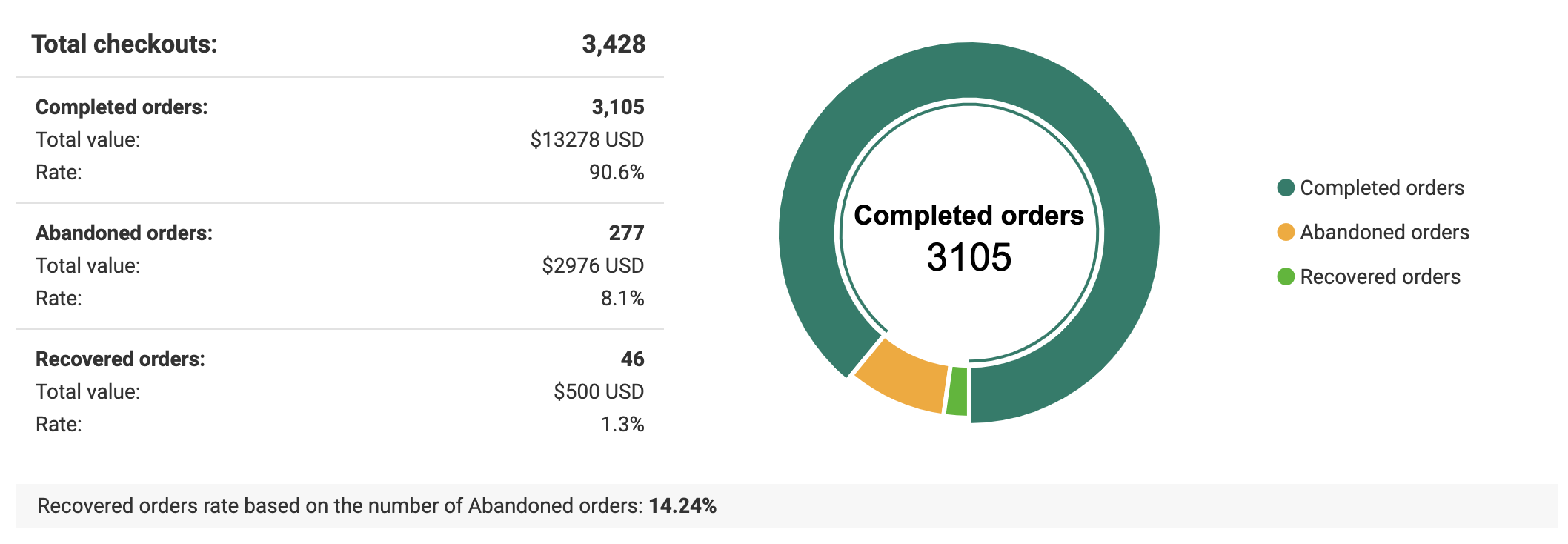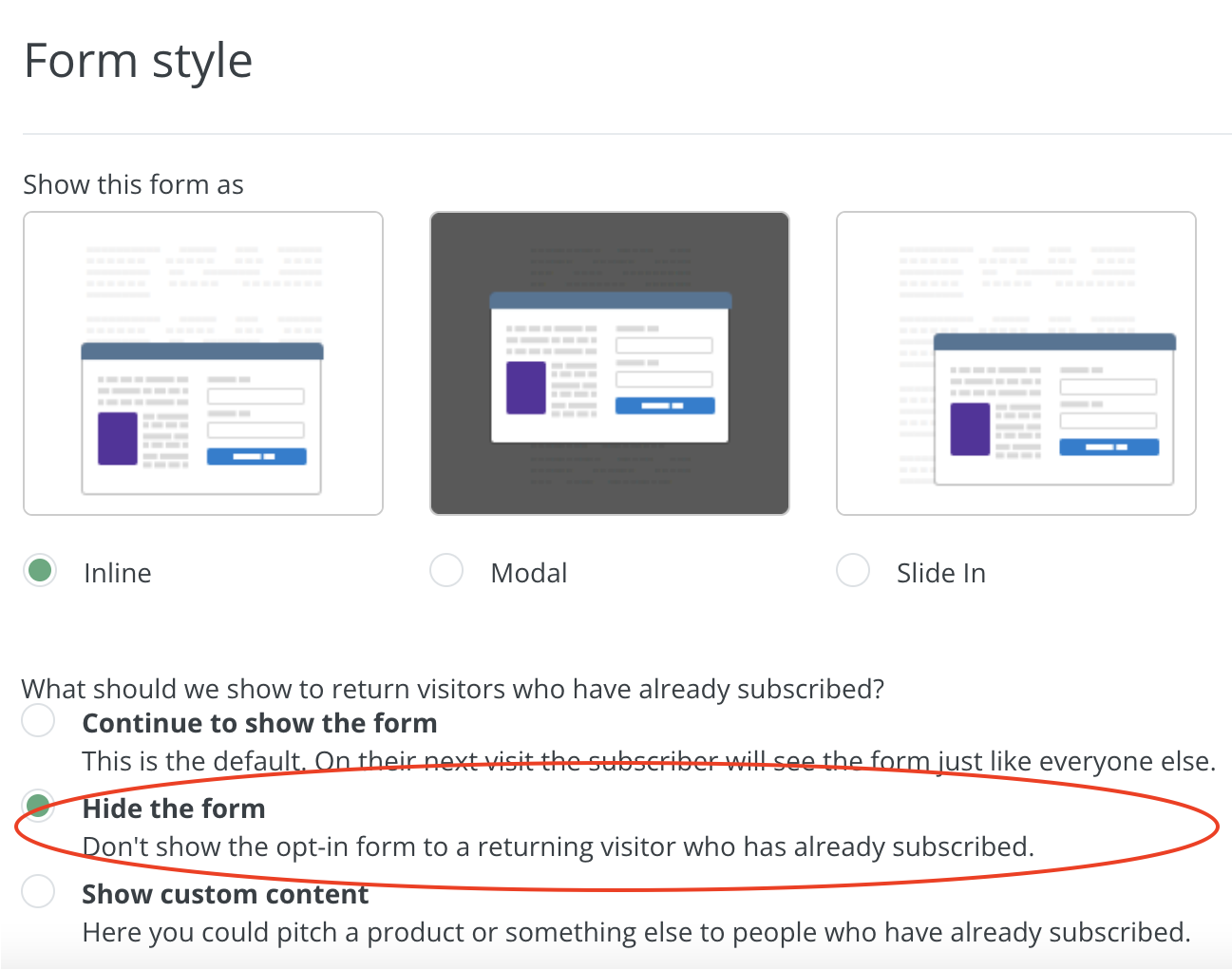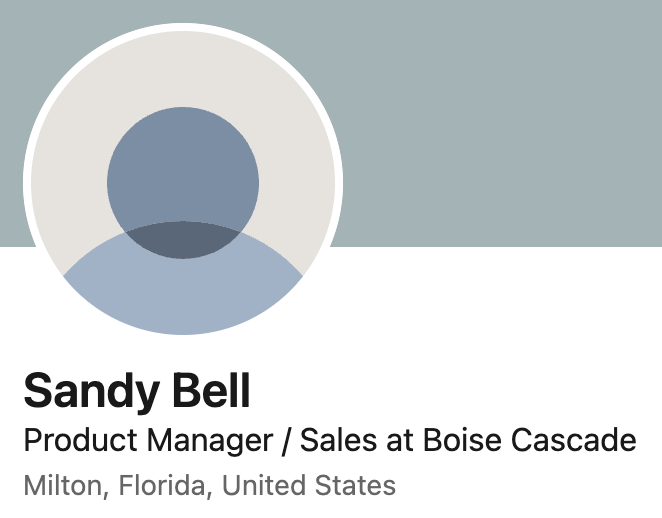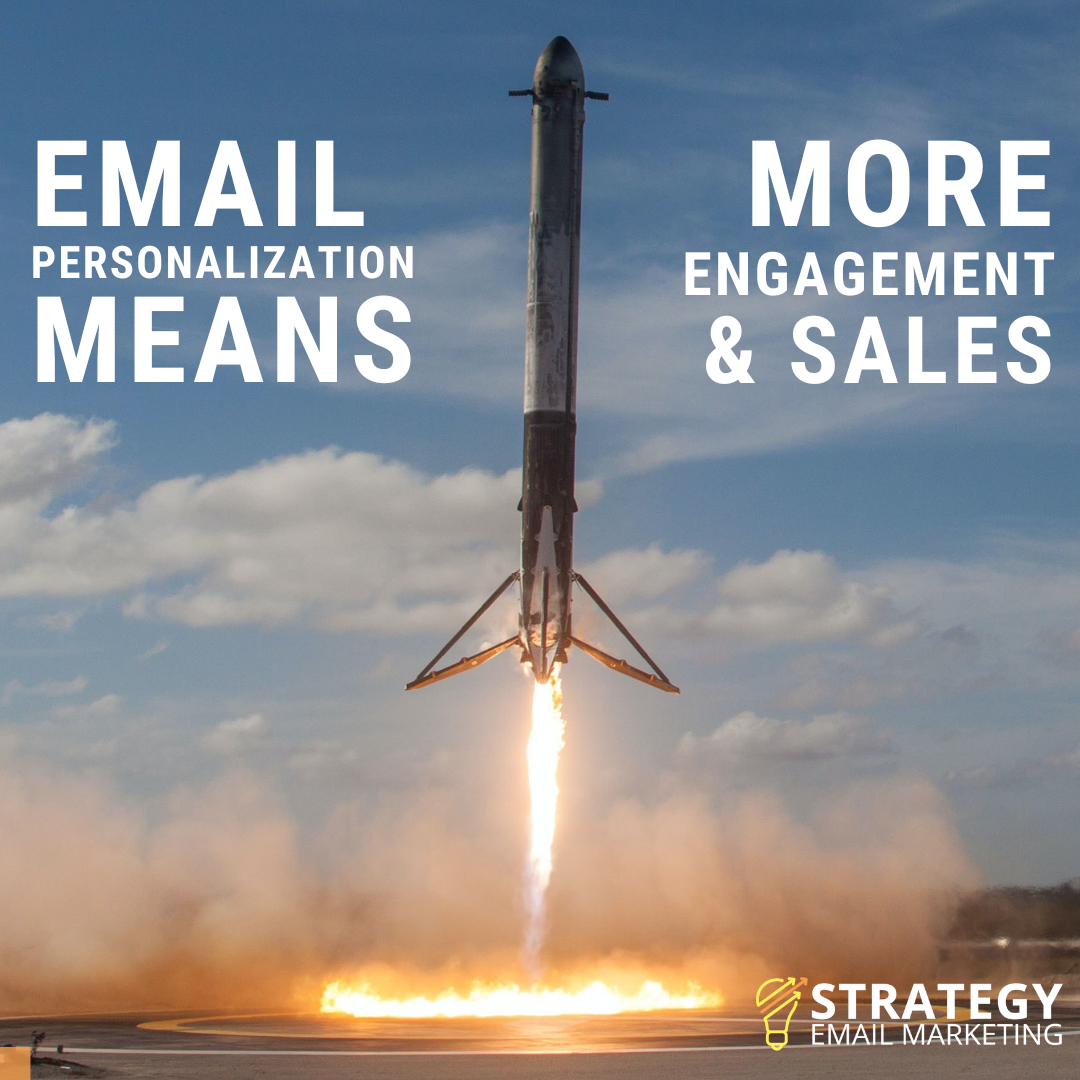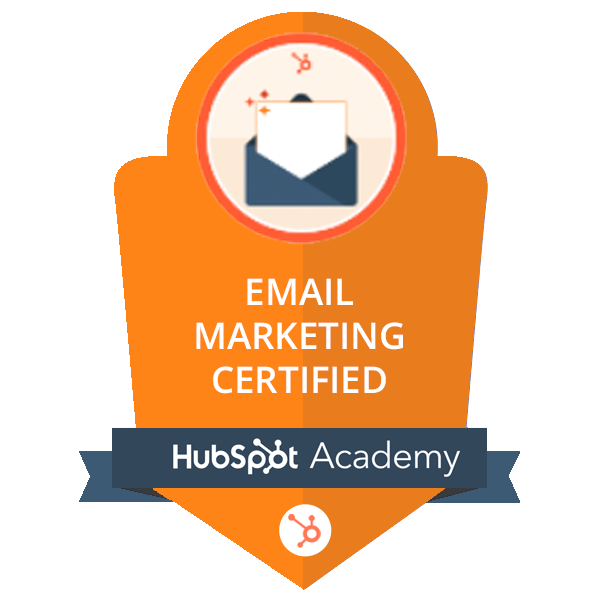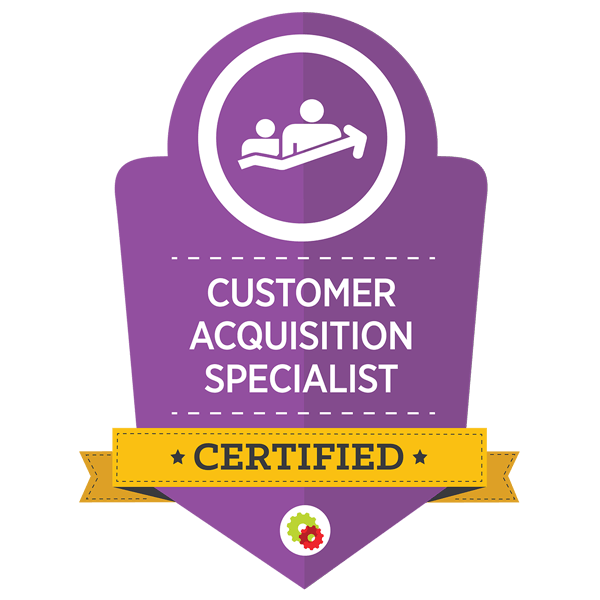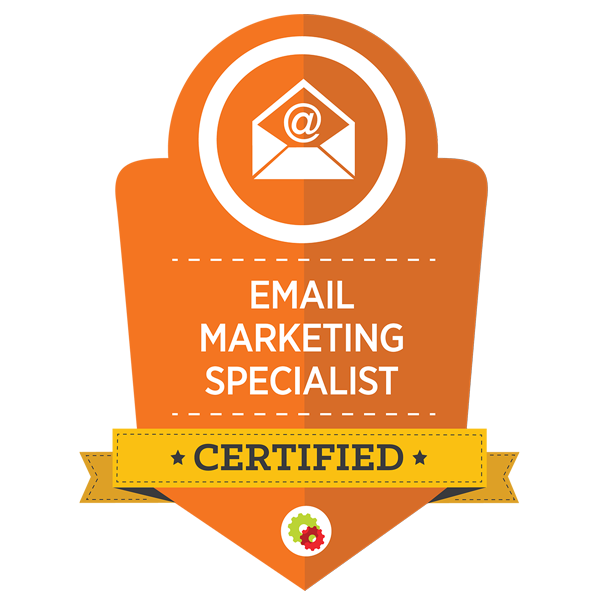Return to Top of Email Marketing Personalization
10-ish Email Marketing Personalization
Techniques that Just Plain Work
Email marketing personalization is key to building a strong relationship with your subscribers.
We all want to feel like we matter, right?
That's why personalization is so important—it shows your customers that you see them as individuals, and that what they do matters to you. It's also a great way to make your customers feel like you're talking directly to them.
CampaignMonitor discusses how personalized emails are “relevant, timely, and from a person.”
When they asked, they found that “74% of marketers say targeted personalization increases customer engagement, and they see an average increase of 20% in sales when using personalized experiences.”
"74% of marketers say they see an average increase of 20% in sales using personalized email marketing."
So how can you get started?
First and most important is to understand the power of segmenting.
Segmenting is a way to separate subscribers into smaller subgroups based on actions they take, which helps you understand things they are interested in.
Understanding and implementing segmentation in your email marketing strategy is one of T-H-E M-O-S-T important things you can do grow your business and cement relationships with your subscribers.
Here are my best (and most effective) ways to personalize your email marketing:
Table of Contents
Email Marketing Personalization Techniques
Personalize by Content
This is one of the most common ways to utilize segmentation to personalize your emails and I encourage you to do this often, in order to build different subgroups of interest in your content and products.
For example, if you send an email with a link to a blog post about different types of water storage options, you can set up an automation (link trigger) that “tags” every subscriber that clicks the link to view the blog post as “Interest - Water Storage Blog Article”.
Then when you send follow up emails to promote the water storage product you sell, you can send to the group of people who were tagged as “Interest - Water Storage Blog Article“.
Doing this will get you higher open and click through rates because those subscribers showed their interest by taking action (clicking the link) in the previous email.
High open and click through rates increase your email deliverability, ensuring more of your emails get to all of your subscribers vs. ending up in the Spam, Junk, or Promotion folders.
If you send a content email, a downloadable PDF, and a review video about types of water storage and the same subscriber clicks on (and is tagged by) each one, the chance of that subscriber purchasing is much higher statistically because they are showing interest through consuming the content you send them.
In the same vein, once a subscriber purchases a product they should also be tagged as a customer.
That way when you promote your water storage product again a few months later, you send to subscribers who are tagged as “Interest - Water Storage”, but NOT to those tagged as “Customer - Water Storage Product”.
This is where grouping subscribers into segments based on multiple tags comes in handy.
When you want to promote your water storage product, you can send to the segment that includes subscribers that have been tagged as “Interest - Water Storage Blog Post”, “Interest - Water Storage PDF”, “Interest - Water Storage Video Review”, and NOT tagged as a “Customer - Water Storage Product”.
Otherwise you would have to select each of those tags every time you send.
This is email marketing personalization at its finest.
Personal to your subscriber, time saving for you.
A quick note on this:
"Remember you're building relationships with people and the more you ask of them up front, the less likely they will be to subscribe."
You could set up a form field that asks for a bunch of specific information when the person subscribes to receive email from you (name, age, gender, location, birthday, etc.)
Your form is perfect for qualifying the people you want on your list.
Having said that, remember that you’re building relationships with people and the more you ask of them up front, the less likely they will be to subscribe.
Building relationships takes time!
Having a “Name” and “Email” field is usually the best way to build your list and then you can find out more specifics about them through follow up emails in time.
Return to Top of Email Marketing Personalization
Personalize with Content Format
This is a fairly new one to me, but makes total sense if you're striving for high engagement with your subscribers…
...which you are...
...right?! ;)
There are multiple types of media that we consume online, namely:
- Blog Articles (Text & Images)
- Images
- Video
- Audio
- Webinars
- eBooks (Downloadable Text & Images)
- Infographics (Data)
If you set up a tag for each of these mediums, you can create link triggers that will tag subscribers when they click on each of the specific types.
If you have been creating content for any amount of time, you know the importance of repurposing content into other mediums. For example, if you create a video, you can take the text and turn it into a content article, an audio byte, and break it up into a handful of social media posts.
Knowing which subscribers click to watch video vs. those who click to read text vs. those who click to listen to audio and then only sending that type of content to those subscribers when you create it will greatly benefit you and them.
It’s likely your subscriber won’t even realize that you’re only sending them a specific type of content, but they’ll appreciate it and as a result your open, scroll, click through, and share rates will go up substantially by sending them the type of content they prefer consuming.
Return to Top of Email Marketing Personalization
Personalize based on Time Zone
It’s a small thing but made a huge difference in my email marketing personalization efforts.
Personally, I live in the Central Time zone.
Through testing I found that sending on Wednesday night between 7p-7:30p was one of the best times for my subscribers to consume my emails because emails were getting the highest average open and click through rates.
When looking at my analytics here, you’ll notice that the top 10 cities where my traffic comes from in the U.S. is as follows:
- Central - 78,820
- Eastern - 43,231
- Pacific - 27,356
The highest amount comes from Central Time, however, almost the same amount (70,587) of my site users come from the Eastern and Pacific time zones.
So, if 7-7:30p Central is one of the best times for me to send to my subscribers, that means I’m sending to Eastern time subscribers between 8p-8:30p and sending to Pacific time subscribers between 5-5:30p, which is not the best time for them.
By “simply” sending to my subscribers based on their time zone it allowed me to greatly increase subscriber engagement.
Some email marketing services have this built in and others do not.
If you are sending to subscribers across multiple time zone, this is definitely something to consider when choosing your email marketing service.
Return to Top of Email Marketing Personalization
Personalize based on Location
Since you can use your analytics to know what cities and time zones your subscribers are in, you can also use email marketing personalization to send to them based on their location.
A large portion of my subscribers are in Texas, but in different cities like Dallas, San Antonio, Houston, Austin, etc.
My email marketing service allows me to send to my subscribers within a radius of a country, city, or zip/postal code.
If you are sending to subscribers in a specific city, let’s say San Antonio, you can personalize by adding an image of well known landmark in San Antonio.
You can also mention San Antonio in the body copy as well.
Recently, I used this feature to invite Speech Therapists in major cities in Texas to join my online therapy company. Since I needed Therapists who are licensed in Texas, I was able to send an invite to a segment of my subscribers that are located in the state.
Doing this is highly personal and allows me to contact specific subscribers on my list without bothering the rest of them, especially when the content is not relevant to them.
Return to Top of Email Marketing Personalization
Personalize Using their Name
The next and perhaps most obvious way to personalize your emails is by using your subscribers name.
You can use their name in the:
- Subject line (great for grabbing attention)
- Greeting
- Body copy
Just don’t overuse it.
Our own name is one of the most powerful words in world.
When used properly, it can help you build a strong relationship with your subscribers.
Used improperly and it will alienate you from them and label you as disingenuous.
Return to Top of Email Marketing Personalization
Personalize by Acknowledging Purchases & making Product Recommendations
As mentioned in the segmenting section, when your customer makes a purchase, you need an automation in place that tags them as a customer.
There is nothing more annoying (and NOT personal) than getting an email promoting, or worse yet, introducing them to a product they have already bought.
Maybe it doesn’t bother you that much, but as an email marketer, it is one of my pet peeves.
On the other hand, when I receive a “thank you for buying” email with other product recommendations that compliment my purchase, I think to myself, “this company is on the ball” and I make it a point to interact with and observe future emails they send me.
Doing this shows your customer that you are keeping track of what they bought and shows them related products that could provide them with additional assistance that they may not have known about.
Using this automation will give your business the professional feel of a large organization like Amazon, Home Depot, or Wayfair, while maintaining the personal touch of a solo or small business.
Return to Top of Email Marketing Personalization
Personalize by Gender & Size
This can be as simple as asking your subscribers who they are.
Set up 2 links (or two buttons) in an email you send asking your subscribers if they are a boy or a girl, then when they click on one they are tagged as one or the other.
If you are selling different products to each gender, you ask what they are most interested in, for example “Sweaters for Men” or “Sweaters for Women”, with the links being the same as mentioned before.
In this way, when you are promoting products to women you only send to those tagged as women and vice versa.
Along the same lines, you can also personalize by clothing size, or a specific type of pet (if relevant), or any other interest you can think of.
This of course is assuming that you don’t do this ahead of time with your lead magnet.
Return to Top of Email Marketing Personalization
Personalize by Birthday or Anniversary
Some email marketing services have a built in way to send a birthday message to each subscriber on their birthday.
Knowing and sending your subscribers a personalized Happy Birthday message and special perk is about as personal you can get!
Depending on your niche, sending specific types of anniversary email messages can also be a great email marketing personalization strategy.
The most obvious type of anniversary message is for marriage, but a few other examples are:
These special events and memories are fantastic ways to personalize your email content, make your subscribers feel special, and promote offers that only apply to them.
Special birthday coupons that offer a % or $ off or a free item (food, clothing, service upgrade) are dynamite ways to strengthen relationships and increase sales.
In fact, according to Experian Marketing Services, “Mystery birthday offers have the highest revenue per email compared to all other offers and discounts.”
Something to consider about these 1 time, 1 event emails is the fact that they won't be very effective if your subscriber doesn’t see them.
Two ideas to overcome this, is:
- Send a few emails leading up to the actual date of the event which will give you multiple chances to be seen and ensure your subscriber receives the most important email on the date of the event.
- If sending a type of code or coupon, give it an expiration date of a few weeks after the subscribers event so they have some time to use it even if they don't see it until after their birthday.
Return to Top of Email Marketing Personalization
Personalize with Abandon Cart Emails
If you run an e-commerce store, a fantastic way to personalize your visitors experience is by sending them an abandon cart email sequence.
If you don’t have an e-commerce store or don’t plan to have one, feel free to skip to the next section.
The way this works is when a potential customer comes to your store, adds a product to their cart, visits the checkout page and adds their email but then fails to complete their purchase.
People are constantly looking for solutions to their problems.
When they find yours and take the steps to find it and add it to their cart, they are demonstrating buyers intent to complete their purchase.
We live in a world of distractions and they definitely don’t stop when we are in the middle of making online purchases.
It isn’t your product’s fault that they get distracted.
When I first learned about this type of email follow up I thought it would be annoying to potential customers.
I couldn’t have been more wrong!
It turns out people actually appreciate you sending them reminders to complete their purchase. I’ve had customers respond to me thanking me for the reminder to return to their cart and buy my products.
Using this email marketing personalization strategy, I have made an average of $13.32 for every $1 spent by sending abandon cart emails over the last 5 years.
This is a highly effective and personal way to connect with potential customers.
I strongly encourage you to implement it sooner than later.
Return to Top of Email Marketing Personalization
Personalize by Hiding Sign Up Forms
This is often an overlooked personalization principle.
Displaying forms that ask site visitors to join your email list or get your lead magnet is how you build your list but there’s a fine line as to how much you should show them.
Like ads, only sending sales emails, and using a persons name in emails, you don’t want to overdo putting opt-in forms on your site.
There are 11 different places (that I’m currently aware of) you can insert an email capture form on your website (found in the “Where” section on this page about opt-in email marketing) and I suggest using 3-4 of them.
If your subscribers/customers visit your site semi-frequently to consume your content, a great way to personalize their experience is by hiding your sign up forms or specific lead magnets.
My email marketing service allows me to do this.
Whether or not your subscribers notice the forms missing from your website, it creates a better user experience for them overall that they will subconsciously appreciate.
Return to Top of Email Marketing Personalization
Personalize for B2B
The principles on this website don’t focus on business to business email marketing though many of them can be applied.
Having said that if you are a B2B email marketer, have reached this page, and read all the way down to this point I will share these 2 email marketing personalization ideas with you.
Knowing the job function and seniority level of the people you are emailing will help you talk the necessary talk and walk the necessary walk when conveying your value proposition.
This kind of information can be obtained the same ways mentioned earlier which is by asking for this information on the opt-in form or by using specific content with link triggers in them to tag those specific people.
Conclusion
I’ll leave you with this statement from a 2013 study by Experian. They found that "Personalized promotional mailings have 29 percent higher unique open rates and 41 percent higher unique click rates than non-personalized mailings."
If you found this helpful, please share it and join our
free Email Marketing Wisdom Newsletter for more.
- Homepage
- Personalization
